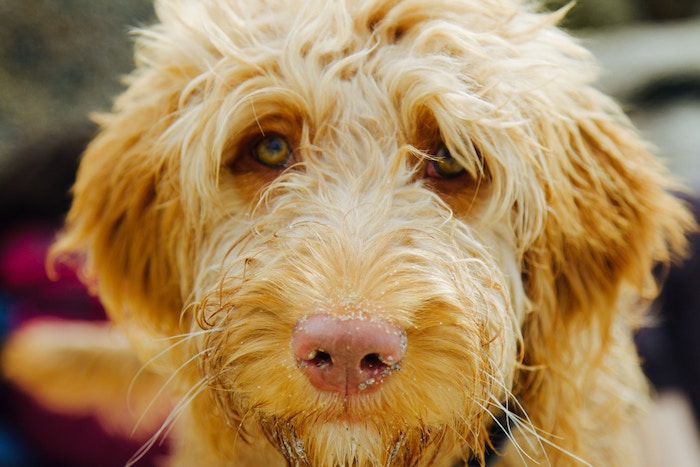As winter progresses, your pet needs additional care to keep them content and cozy. We’ve covered general cool-weather pet tips here, but this particular chilly challenge deserves it’s own article. It’s a struggle that most pet-parents will know well – that of a thunderstorm. While it can be a year-round experience, winter is prime time for unpredictable weather that can have your pets panicking. We’ve collected our best advice on alleviating storm anxiety.
What’s With The Thunder-Fear?
Storm anxiety is a very common phenomenon. What makes them particularly fear-inducing for your furry family member, is that they often feel the storm coming on before you do. Not only do they hear the noise of thunder and lightning, but they also register darkness outside, the change in air pressure and temperature and even the smell of an approaching storm. This makes it especially important to predict storms where you can and take action ahead of time. Fortunately, this is easier than ever because thunderstorms are almost always accurately predicted on weather forecasts and websites. Stay informed to ensure you can be with your dog during a storm, whenever possible. Dogs left alone are the most likely to be affected and even more so if they have to stay outdoors.
Anxiety can present itself in escape attempts – outdoor dogs may try to escape the yard or make their way indoors. Needless to say, this is not only a frightening experience for your pet, but a costly one for you in the case of damage to your yard and property. Most importantly, your dog can put themselves in real danger when acting from this place of fear.
Storm Preparation 101:
Make a doggie ‘den’:
The most obvious way to prepare for a storm is to bring your fur-baby inside. Because we know they can sense the storm on multiple sensory levels, it’s best to move your dog to a sound-proof location indoors, where they aren’t able to hear, smell and feel the impact of the thunder.
When considering the ultimate ‘den’ for your pet to wait out the storm, consider a room that has brick walls (more likely to be soundproof than timber), heavy curtains and foam rubber cut to fit the window (or even sound-proof wall cladding form your local hardware store). Walk-in wardrobes make great ‘dens’ because they are small, well-insulated by walls and clothes and may even envelop your pet by your own comforting scent.
Gentle music can mask storm sounds, but avoid any loud, abrupt and unpredictable noises like the TV or radio. Because your pet is already contending with the loudness of thunder and lightning, any excess noise will exacerbate their stress.
Consider medications and natural remedies:
If your dog seriously suffers in storms, vets can provide medications, to be used on an as-needed basis. Avoid heavy tranquillisers as these can sometimes make dogs more noise-sensitive and ensure you test the dosage before a storm. This ensures you know whether the dosage is effective, how long it lasts and how long it takes for the effects to activate.
Dog pheromones can be a great option for calming during storms and can be administered in different ways. Lavender sprays can also have a positive effect on anxious animals. Many people also have great results using the Thundershirt, which calms a dog’s nervous system through gentle pressure.
Overdose on love and affection:
Before a storm, it’s important to not act like anything is wrong. Your pet is so finely attuned to your behaviour and moods, that any break from normalcy may signify that something is up. This will cause them more anxiety rather than less. Keep your behaviour calm and balanced and your pet is more likely to follow suit.
However, if the storm is already upon you and your dog is struggling, this is the time to show them serious TLC. Some people warn against ‘rewarding’ a panicked dog with affection will encourage further negative behaviour. But we disagree. When your fur-baby is already in the throes of storm anxiety, the most important thing is getting them as calm as possible, as quickly as possible. If they are already ‘emotional’, then withholding affection is unlikely to have the desired effect. Instead, dedicate your energy to calming them down.
Some strategies include:
- Massage that focuses on major muscle groups. Use your thumb and index finger and make small circles around the neck, shoulder and forehead.
- Compress your pup by wrapping them firmly in a towel, or giving them a (comfortably) tight cuddle around the chest.
- Whisper to your dog very softly, smile at them calmly and cradle their face while making them look at you. If you blink your eyes as if you’re falling asleep, this can often have a very pacifying effect.

